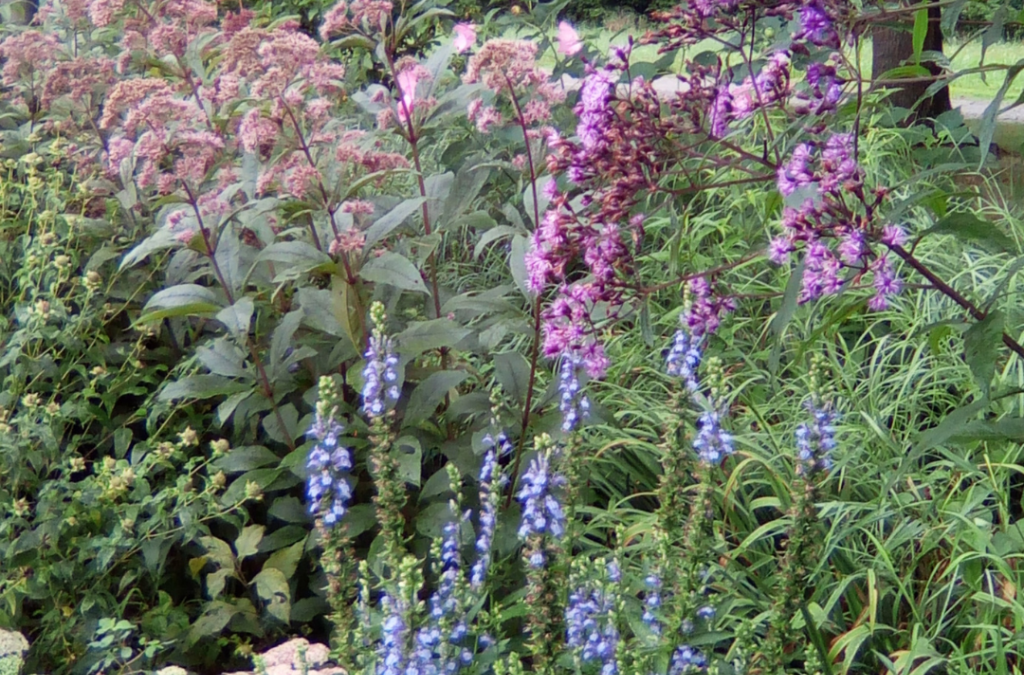Garden centers provide a plethora of flowering and non-flowering plants that are attractive to the human eye and can be exciting to bring them home to improve one’s property. For some, gardening is not their talent and instead, prefer a manicured lawn. Without a doubt, beautifying the American yard is gratifying and may provide a sense of personal accomplishment and proper ownership. However, selecting and planting cultivars or treating our property with pesticides based on our appeal may not prove to be as valuable to our neighboring wildlife.
In the grand scheme, we have not thought much about the landscape as a whole. The combination of rapid urbanization and agriculture creates a mosaic of monocultures, paved surfaces, fragmented natural habitats, and patches of invasive plants. In the U.S., 20% of the landscape is agriculture while the single most irrigated crop (lawns) covers 1.9% of the landscape, a small percentage but enough to create ecological issues. Without large and long connected habitats, (whether they are forests, wetlands, or prairies etc.) local wildlife may not be able to navigate between agriculture and urban environments. In other words, they can be isolated from other natural resources and mates.
Native plants can help support biodiversity. But before we dive in, we have to understand why native plants are highly valuable. For the most part, native plants and animals have developed an evolutionary history called coevolution. Pollinators and plants are mutualists, benefiting each other’s survival. For instance, the monarch butterfly depends on milkweed for development and reproduction. Females will lay their eggs on milkweed so that, when hatched, the caterpillars can consume the leaves. Interestingly enough, milkweed is toxic and not many animals or other insects feed on it. However, monarch caterpillars can incorporate the toxin into their tissues, making them poisonous before and after becoming a butterfly. This relationship did not develop overnight, and instead, took millennia for this insect to develop this defense mechanism, all thanks to their food source.
It is clear that native plants and animals can co-exist without negative impacts on each other because of their evolutionary history. Moreover, these relationships then develop complex food webs, increasing biological activity. Selecting native plants means that the homeowner is also selecting certain pollinator and insect communities. These insects then become vital food sources for many birds, rodents, amphibians, and other critters.
Overall, installing a diversity of native plant communities (grasses, trees, shrubs, flowers etc.) can ensure supporting wildlife and various pollinators. In a recent study, just planting two to three native trees already increases productivity by 20% – 30%, meaning they provide more food and energy to the environment they reside in. Yards that have five native trees increases productivity by 50%. Oregon State University conducted another study in 2009 to measure the abundance and presence of caterpillar and bird species. They found that caterpillar abundance was four times greater, and species diversity was three times greater. Meanwhile, there were 55 percent more birds and 73 percent more bird species within native gardens than compared to conventional gardens.
To make sure we are giving space and resources to our native wildlife and pollinators, we have to reevaluate the American lawn and gardens. Reducing traditional practices to maintain a property and installing native plant gardens can significantly help. In addition, creating these habitat niches allows ourselves to immerse and witness these complicated relationships, giving us new insights and ideas of how we can improve the landscape at home. In other words, we are becoming land stewards in an effort to properly support and protect these relationships.
Information about native plant gardens:
Rain Garden Manual:
Lists of Ohio’s native plants by habitat type:

